#machi layouts
Text









Hunter x Halloween 🎃
#hxh icons#hunter x hunter#hunter x hunter icons#hxh#gon icons#killua icons#kurapika icons#alluka icons#chrollo icons#shirahoshi icons#machi icons#feitan icons#kite icons#hallowen#halloween icons#mobage cards#hxh layouts#anime icons
360 notes
·
View notes
Text


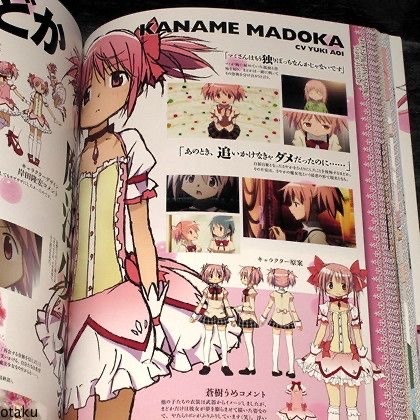




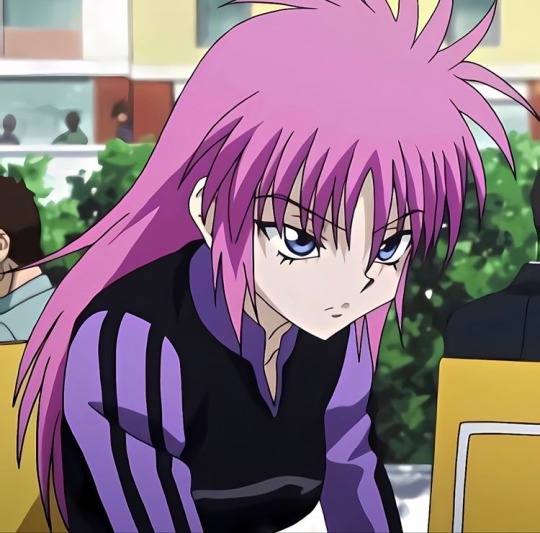
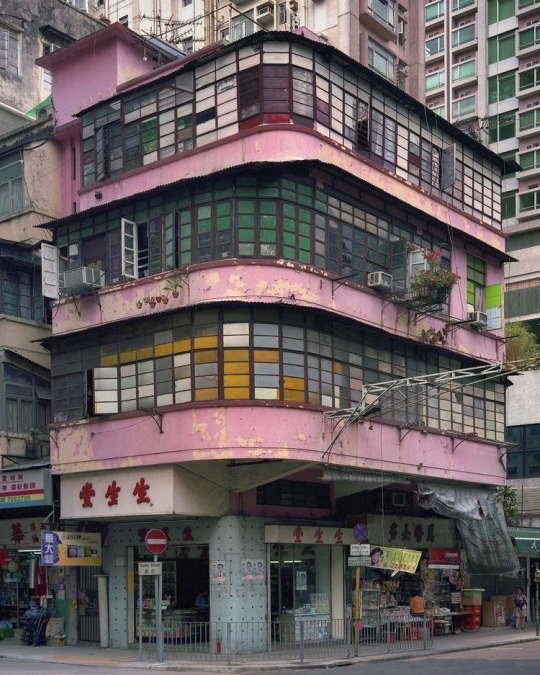
#machi hxh#messy moodboard#todays mood#y2k moodboard#anime layouts#anime moodboard#hxh icons#hxh layouts#hxh moodboard#pink moodboard
84 notes
·
View notes
Text





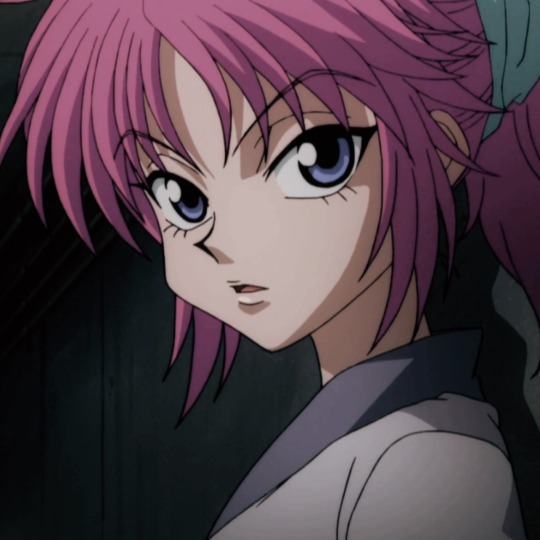



machi komacine from hunter x hunter
#🎥 serexvu icon set#twitter#twitter layout#twitter themes#anime icons#anime icon#twitter headers#twitter layouts#manga icon#manga#anime#manga icons#machi komacine#hunter x hunter
17 notes
·
View notes
Text
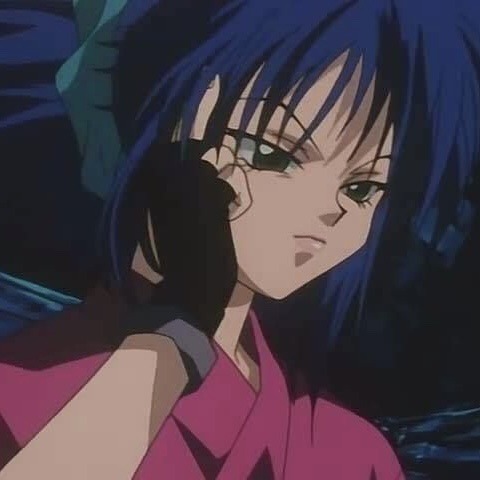

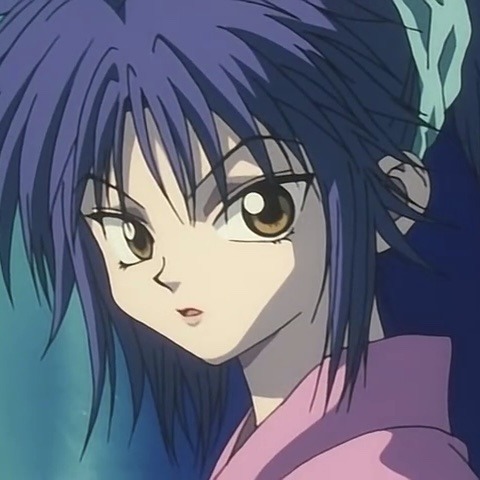






#machi#machi icons#hxh phantom troupe#hxh#hunter x hunter#hxh 1999#hunter x hunter 1999#machi komacine#machi komacine moodboard#machi komacine icons#hunter x hunter aesthetic#hunter x hunter machi#hxh machi#hxh moodboard#hunter hunter#hunter x hunter moodboard#hxh icons#hxh layouts#hxh pfps#90s anime#anime moodboard#moodboard#random moodboard#anime#hxh manga#hxh anime#phantom troupe icons#hxh chrollo#hxh hisoka
55 notes
·
View notes
Text
The look of... VIII: Shimizu 清水

Historical context
The first official date in the history of Shimizu Geigi is 1872, when "Machi Geisha" (まち芸者), who were distinct from "Kaku Geisha" (廓芸者), appeared. A Kenban (registry office) was established in 1877. At that time, Machi Geisha and Kaku Geisha combined were around twenty people. Only ten years later, in 1887, their number had increased to 100. The number of Geigi continued to grow.
In 1938, the number of Geigi was around 260, and they were highly regarded nationwide for their skills in art and behaviour. In 1951, a "Shimizu Geigi school" (清水芸妓学校) was opened, around 150 Geigi attending the event.

In the 1970's, Japan's period of economic growth started tapering off, interest in traditional arts dwindeled, which resulted in less work opportunities for Geigi and the number of Ryotei decreasing. In response to this, local business leaders and Shimizu Geigi started an organisation to help fostering new Geigi (Seibikai 清美会).
By 1985, their number had decreased to thirteen and the Kenban closed. In 1991, local businessmen and Geigi formed a different company (Seibi Co. 清美(株)), which worked as employer for Geigi. Due to a bad economic environment, Shimizu Odori (清水をどり) was last held in 1998, Seibi Co. was dissolved in 2004, and Haru no mai (春の舞) was discontinued in 2009. As a result of this, some of Seibi's employees became independent Geigi.
Allegedly, the number of Geigi hit rock bottom in 2011 with only two remaining. However, in 2012, around eleven Geigi worked in Shimizu. Since then, the city had a steady stream of Geigi coming and going again. At the end of this year, 2023, there are ten Geigi working in the city.
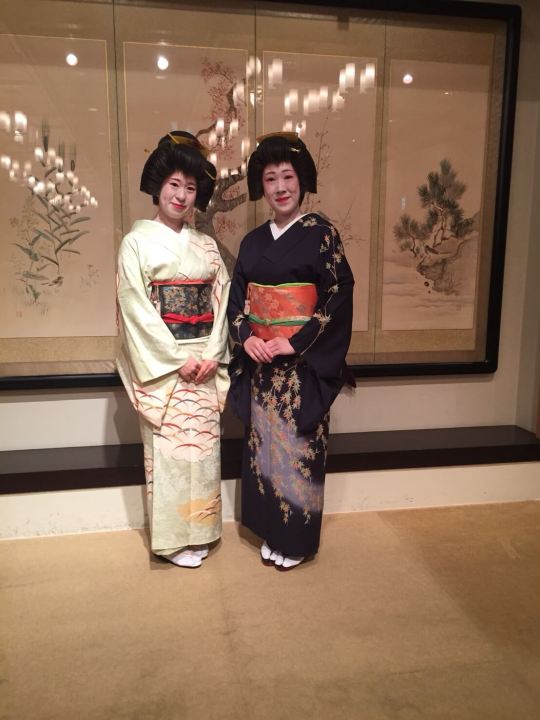
The look of Shimizu Geiko
Local Term: Geigi 芸妓
※ Hairstyle: Taka shimada, Tsubushi shimada
※ Kanzashi: Kushi, Maezashi, bekko kogai, ear of rice in the new year period
※ Kimono: Homongi, Kuromontsuki Hikizuri
※ Haneri: white
※ Obi: Taiko musubi
※ Obiage: green, pink, white, red
※ Obijime: flat, 1 knot
※ Footwear: Zori

Casual look
※ Hairstyle: Yohatsu
※ Kanzashi: none
※ Kimono: Homongi, rarely Komon
※ Haneri: white
※ Obi: Taiko musubi
※ Obiage: white, pink
※ Footwear: Zori

The look of Shimizu Maiko
Local term: Shinjin Geigi 新人芸妓
※ Hairstyle: Momoware Katsura, sometimes real hair styled (shin nihongami)
※ Kanzashi: seasonal and non-seasonal Hanakanzashi, Katsuyama, maezashi, Shidare in all age groups
※ Kimono: Furisode with shoulder tucks or no tucks at all
※ Eri: white with white embroidery, plain white, white with multicolour embroidery, other colours possible especially during summer months
※ Obi: Koken musubi
※ Obiage: flat, mostly red/silver, red/white shibori, other colours also possible (green/beige/light blue)
※ Obijime: flat or round with 1-4 knots. No obidome
※ Footwear: Zôri


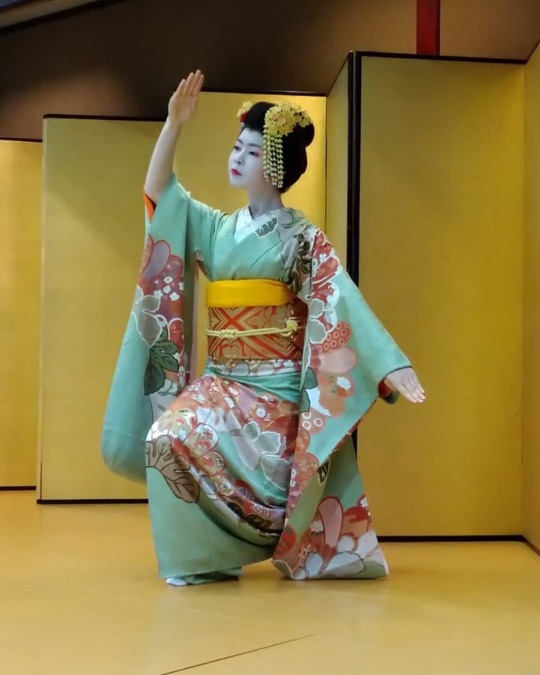

Notes
Shimizu was merged with Shizuoka in 2003. Shimizu Geigi and other traditional arts performers are backed by 静岡伝統芸能振興 Shizuoka dentô geinô Shinkô-kai/Shizuoka traditional performing arts promotion association, which is the successor to Seibikai. You might notice I didn't start this post with a historical b/w photo. There are some old photos on the Shizuoka Dentogeino homepage, but they are the size of a postal stamp. And that's it. I feel let down. No chance to explore the historical style of Shimizu.
Anyways. "The look of Shimizu/Shizuoka" was requested by @geimaiko. The layout of this post is based on geimaiko's own. Also... geimaiko originally started these series. If you liked this post, you should go and thank her, because without her, there would be no "the look of..." ;)
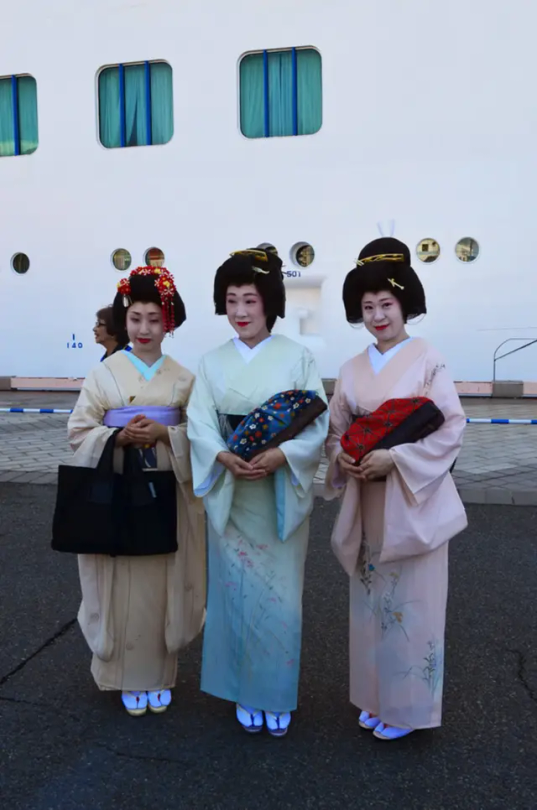

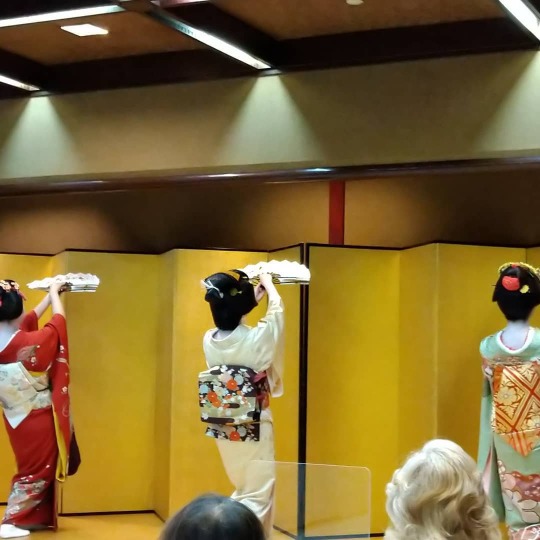
Sources
https://www.shizuoka-dentogeino.jp/geigi/shizuoka_history/, https://www.shizuoka-dentogeino.jp/geigi/shimizu_history/, http://www.shimizu-port.jp/geigi.html, https://www.nikkei.com/article/DGXNZO41971500Z20C12A5L61000/ (headline and preview only), https://www.youtube.com/@shizuokadentogeino/videos
Pictures: Komachi May 17, Makoto May 17, Komachi+Makoto Oct 17 (sources nowhere to be found), Sakurako+Fukutaro Apr 22, Kikuno+Umeka Nov 14, Iroha Jun 20, Iroha Oct 20, Fukutaro Oct 20, Ichiryo+Komachi+Makoto ~2016, Komachi+Sakurako Apr 18, Fukutaro+Sakurako Oct 18, Iroha+Fukutaro+Sakurako Oct 20
#mg#geisha#geiko#maiko#hangyoku#geigi#shizuoka#kimono#komachi#makoto#sakurako#fukutaro#kikuno#umeka#iroha
48 notes
·
View notes
Text
Crafting Your Culinary Haven: A Comprehensive Modular Kitchen Buyer's Guide
Introduction
The kitchen is often referred to as the heart of a home, and designing a functional and aesthetically pleasing kitchen space is a task of paramount importance. Modular kitchens have emerged as a popular choice for homeowners seeking efficiency, style, and organization in their culinary haven. In this comprehensive buyer's guide, we will explore the key aspects to consider when crafting your modular kitchen, ensuring a seamless blend of form and function.
Understanding Modular Kitchens
1. Modular Kitchen Basics
Definition:
A modular kitchen is a modern kitchen layout characterized by pre-manufactured cabinet parts known as modules. These modules are designed to optimize space, enhance storage, and provide a sleek and organized appearance.
Features:
Customizable Layout: Modular kitchens offer flexibility in design, allowing homeowners to customize the layout based on their preferences and available space.
Efficient Storage Solutions: Incorporating clever storage solutions such as pull-out trays, carousel units, and modular cabinets maximizes storage capacity.
2. Advantages of Modular Kitchens
Efficiency:
Space Optimization: The modular design allows for efficient utilization of available space, even in compact kitchens.
Easy Installation: Modular kitchens are relatively easy to install, minimizing disruption during the renovation process.
Aesthetics:
Contemporary Appeal: The sleek and modern design of modular kitchens adds a contemporary touch to the overall aesthetic of your home.
Versatile Styles: Available in a variety of styles and finishes, modular kitchens can be customized to complement the existing decor of your home.
Key Considerations for Choosing a Modular Kitchen
1. Budget Planning
Setting a Budget:
Define Your Budget: Determine a realistic budget for your modular kitchen, considering both the cost of materials and installation.
Prioritize Essentials: Allocate a significant portion of your budget to essential elements such as cabinets, countertops, and appliances.
2. Layout and Design
Functional Zones:
Work Triangle: Consider the classic kitchen work triangle—connecting the stove, sink, and refrigerator—to ensure a functional and efficient layout.
Zonal Planning: Divide the kitchen into zones for cooking, preparation, and storage, optimizing workflow and convenience.
Customization:
Tailored to Your Needs: Customize the layout based on your specific cooking habits, preferences, and the size of your family.
Ergonomic Considerations: Prioritize ergonomic design, ensuring that the kitchen layout minimizes unnecessary movements during cooking.
3. Material Selection
Cabinet Materials:
Quality Plywood: Opt for cabinets made of high-quality plywood, as it offers durability and resistance to moisture.
MDF or HDF: Medium Density Fiberboard (MDF) or High-Density Fiberboard (HDF) are suitable for areas where moisture is less of a concern.
Countertop Materials:
Granite: Durable and heat-resistant, granite countertops add a touch of luxury to your kitchen.
Quartz: Non-porous and low-maintenance, quartz countertops are resistant to stains and scratches.
4. Storage Solutions
Cabinet Organization:
Pull-Out Shelves: Enhance accessibility with pull-out shelves for pots, pans, and groceries.
Drawer Dividers: Keep utensils and cutlery organized with customizable drawer dividers.
Modular Units:
Tall Units: Maximize vertical space with tall cabinets for storing pantry items and kitchen appliances.
Corner Solutions: Utilize corner cabinets efficiently with pull-out trays or carousel units.
5. Appliance Integration
Built-In Appliances:
Integrated Design: Consider built-in appliances for a seamless and integrated look.
Energy Efficiency: Opt for energy-efficient appliances to reduce long-term operating costs.
Space Planning:
Workstation Integration: Integrate workstations for specific appliances, such as a designated area for the microwave or coffee machine.
Ventilation: Ensure proper ventilation for cooking appliances, with options like chimney or hood installations.
6. Aesthetic Elements
Color Palette:
Neutral Tones: Choose neutral colors for a timeless and versatile look, allowing flexibility in decor and accessory changes.
Accent Colors: Add pops of color through accessories, backsplashes, or decorative elements.
Cabinet Finishes:
Laminate Finish: Affordable and durable, laminate finishes come in a variety of colors and textures.
Acrylic Finish: High-gloss acrylic finishes provide a modern and sophisticated aesthetic.
7. Lighting Design
Task Lighting:
Under-Cabinet Lighting: Illuminate countertops and work areas with under-cabinet LED lighting.
Pendant Lights: Install pendant lights above the kitchen island or dining area for both functionality and style.
Ambient Lighting:
Ceiling Fixtures: Consider ambient lighting fixtures, such as recessed lights or chandeliers, to provide overall illumination.
Natural Light: Maximize natural light by incorporating large windows or glass doors into your kitchen design.
8. Flooring Choices
Material Selection:
Tile Flooring: Durable and easy to clean, tile flooring is a popular choice for kitchens.
Hardwood Flooring: Add warmth to the kitchen with hardwood flooring, but ensure proper sealing to resist moisture.
Anti-Slip Features:
Textured Tiles: Choose tiles with a textured surface to prevent slips and falls, especially in areas prone to water spills.
Rugs or Mats: Place anti-slip rugs or mats in high-traffic areas to enhance safety and comfort.
9. Installation and Maintenance
Professional Installation:
Experienced Contractors: Hire experienced professionals for the installation to ensure precision and functionality.
Quality Checks: Conduct thorough quality checks during and after installation to address any issues promptly.
Maintenance Tips:
Regular Cleaning: Establish a routine for regular cleaning to prevent the accumulation of dirt and grease.
Prompt Repairs: Attend to any repairs promptly to maintain the efficiency and aesthetics of your modular kitchen.
Conclusion
Crafting your culinary haven with a modular kitchen involves thoughtful consideration of various elements, from layout and materials to aesthetics and functionality. By delving into the details outlined in this buyer's guide, you can embark on the journey of creating a kitchen that not only suits your lifestyle but also elevates the overall ambiance of your home. May your modular kitchen become a seamless blend of efficiency, style, and comfort—a space where culinary creativity flourishes and family moments are savored.
0 notes
Text
10 Benefits of Investing in a Bottle Unscrambler Machine for Your Production Line
In today’s fast-paced manufacturing environment, efficiency and productivity are key to staying competitive. One piece of equipment that can significantly enhance efficiency in your production line is a bottle unscrambler machine. In this blog post, we’ll explore the top 10 benefits of investing in a bottle unscrambler machine and how it can revolutionize your production processes.
Increased Production Speed:
Bottle unscrambler machines automate the process of orienting and positioning bottles, significantly increasing the speed of your production line. With precise and consistent handling, these machines can handle a high volume of bottles per minute, accelerating your overall production rate.
Enhanced Efficiency:
By automating the bottle unscrambling process, you reduce the need for manual labor and minimize the risk of human error. This leads to improved efficiency throughout your production line, as workers can focus on other tasks that require human expertise.
Versatility:
Bottle unscrambler machines are highly versatile and can handle a wide range of bottle shapes, sizes, and materials. Whether you’re packaging pharmaceuticals, cosmetics, food products, or beverages, a bottle unscrambler can adapt to your specific needs, offering flexibility in production.
Space Optimization:
Unlike manual bottle unscrambling methods, which often require significant floor space and manpower, bottle unscrambler machines are compact and can be integrated seamlessly into existing production lines. This optimization of space allows you to maximize your facility’s layout and potentially increase overall production capacity.
Improved Product Quality:
Consistent bottle handling provided by unscrambler machines reduces the risk of damage or misalignment during the packaging process. This ensures that your products are packaged accurately and securely, maintaining their integrity and quality throughout the production cycle.
Reduced Downtime:
Bottle unscrambler machines are designed for reliability and minimal maintenance requirements. By minimizing downtime associated with manual adjustments, repairs, or troubleshooting, you can maximize the uptime of your production line and meet tight deadlines more consistently.
Cost Savings:
While the initial investment in a bottle unscrambler machine may seem significant, the long-term cost savings can be substantial. By reducing labor costs, minimizing material waste, and increasing overall efficiency, these machines offer a compelling return on investment over time.
Scalability:
As your production demands grow, bottle unscrambler machines can scale with your business. Whether you need to increase throughput, expand your product line, or adapt to changing market trends, these machines provide the flexibility to accommodate future growth and expansion.
Regulatory Compliance:
In industries with strict regulatory requirements, such as pharmaceuticals or food and beverage, precision and consistency are paramount. Bottle unscrambler machines help ensure compliance with industry standards and regulations by providing accurate and traceable packaging processes.
Competitive Advantage:
By investing in advanced automation technology like bottle unscrambler machines, you differentiate your business from competitors still relying on manual labor or outdated equipment. This gives you a competitive edge in terms of efficiency, quality, and responsiveness to customer demands.
Conclusion:
From increased production speed and efficiency to cost savings and regulatory compliance, the benefits of investing in a bottle unscrambler machine for your production line are clear. By embracing automation and streamlining your packaging processes, you position your business for long-term success in today’s dynamic manufacturing landscape.
Source: https://autopackmachinespvtltd.wordpress.com/2024/01/28/10-benefits-of-investing-in-a-bottle-unscrambler-machine-for-your-production-line/
0 notes
Text
0 notes
Text
Nampō Roku, Book 7 (46a): Displaying the Chaire as an Hitotsu-mono [一ツ物] in the 4.5-mat Room (Part 1, Jōō’s Fukuro-dana [袋棚]).

46a) With respect to [placing] an hitotsu-mono [on the mat] in front of the tana in the 4.5-mat room, and then changing the position of the tana [so it would agree with the chaire’s kane], this practice began at the time when [Ri]kyū’s Shiri-bukura [尻膨] was still known by the name Matsuyama [松山]¹.
In general, repositioning the tana should not be done², so this is a matter that has to be understood very, very carefully³. Ordinarily, everything has to conform with the kane [projected onto the mat] from within the fukuro-dana, so things like the chaire or chawan should conform with the yin- and yang-[kane] of the tana⁴.
But in order to treasure the Matsuyama [chaire], the chaire (placed on [its] tray) was arranged on the most honorable among the 5-kane from the surface of the mat [which was the second kane from the heri]⁵. Then, so that it would correspond with the Matsuyama’s kane, the tana was repositioned [as well]⁶: it was pushed 7-me toward the katte [so the mizusashi would be resting on the same kane as the chaire], as a way to do honor to the chaire⁷.
Nevertheless, other people did not understand the details [of why this was done]⁸. Because [the rule] had always been [that the fukuro-dana should be oriented] 7-me or 4-me [from the heri], they thought this was a serious mistake⁹.
_________________________
◎ While this entry is divided into two parts in all of the versions* of the Nampō Roku to which I have access, in the Sadō ko-ten zen-shū [茶道古典全集] edition, it is combined with the next section†. As the division into two parts is very logical (since they deal with different ways to display the chaire as an hitotsu-mono [一ツ物]), as well as because, dealt with as a whole, the version found in the Sadō ko-ten zen-shū would be too long to translate as a single post (especially in the short time available), it seems best to follow the majority and divide the material into two parts.

The language indicates that this entry was written during the early Edo period, and reflects traditions passed down by Imai Sōkyū’s machi-shū followers: while the present section deals with Jōō’s fukuro-dana [袋棚] (above), the second part looks at the way an hitotsu-mono should be displayed in front of Sōkyū’s hora-dana [洞棚] (below)‡.
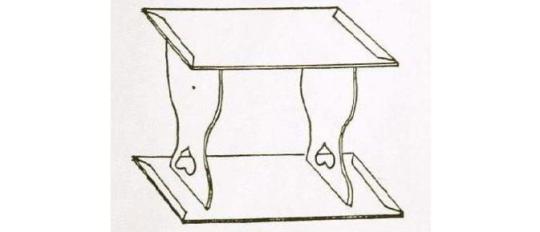
A summary of the portion of entry 46 that is translated in this post has already been given in the post entitled Nampō Roku, Book 7 (38d): Three Kaki-ire from Shibayama Fugen’s Tokushu Shahon [特殊写本], Part 2**. However, while the content was discussed briefly there (because entry 46 was referenced in Shibayama Fugen's commentary), I stated that it would be covered in detail here.
__________
*All of the different versions are almost identical -- with most of the differences being found in those (like Shibayama Fugen’s teihon [底本]) that were written down from memory (resulting in occasional orthographic modifications that have no impact on meaning). I will mention the differences in the footnotes, where they are significant enough to merit this kind of attention.
†Tanaka Senshō’s basic version of the text is almost always identical to what is found in the Enkaku-ji manuscript, but even he has the material separated into two distinct entries in his commentary. (There are no other textual variants mentioned by any of the commentators, which suggests that this entry was inserted into the Shū-un-an cache at a fairly late date.) This leads me to question whether combining the two might not have been an error on the part of the Sadō ko-ten zen-shū’s editor, or their formatters.
Originally published in the 1950s, the layout would have been done on paper, by hand; and, since the entries are not numbered, this might have facilitated these two becoming joined into one. Unfortunately, though it was the first, this is not the most carefully prepared edition of the Nampō Roku, probably because the collection includes too many other things (so the amount of time that could have been spent on the preparation on any given book of the 12 volume set would have been limited by the overall progress of the whole, since all 12 volumes of the Sadō ko-ten zen-shū were apparently published simultaneously). I have mentioned this before, especially with reference to the exceptionally poor quality of the illustrations (which, in the Enkaku-ji manuscript, are so perfect that one can measure them with a ruler and then just scale everything up to achieve a perfect reenactment of what is being described); though the supplementary notes are also so few (and even those are often riddled with errors) that they hardly help to make a difficult text easier to read or interpret.
‡While the other mizusashi-dana [水指棚] (tana derived from the half of the fukuro-dana where the compartment for the mizusashi was located) would have been handled in a similar manner, if this text was really written by Nambō Sōkei, we might expect Rikyū’s tana to be featured, rather than the tana created by his arch-nemesis.
**The URL for that post is:
https://chanoyu-to-wa.tumblr.com/post/701384729031737344/namp%C5%8D-roku-book-7-38d-three-kaki-ire-from
Additional insights may be gained by referring to the other posts connected with entry 38:
38a) https://chanoyu-to-wa.tumblr.com/post/699844582761971713/namp%C5%8D-roku-book-7-38a-the-way-to-orient-the
38b) https://chanoyu-to-wa.tumblr.com/post/700478759399292928/namp%C5%8D-roku-book-7-38b-the-way-to-orient-the
38c) https://chanoyu-to-wa.tumblr.com/post/700785124239933440/namp%C5%8D-roku-book-7-38c-three-kaki-ire-from
¹Yojō-han ni tana-mae hitotsu-mono ha, Kyū no Shiri-bukura, Matsuyama to na wo tsukerare-shi toki, fukuro-dana wo atsukaite oki-awaserare-shi, kore sai-sho nari [四畳半ニ、棚前ノ一ツモノハ、休ノ尻ブクラ、松山ト名ヲ付ラレシ時、袋棚ヲアツカヒテ置合ラレシ、コレ最初也].
Kyū no Shiri-bukura, Matsuyama to na wo tsukerare-shi toki [休の尻ぶくら、松山と名を付けられし時] means Rikyū’s Shiri-bukura chaire, but at the time when the name Matsuyama was still used for it....
Shiri-bukura [尻膨茶入] (which means “swollen hips”) was the name that Rikyū gave to this chaire after it was returned to him. During the sixteenth century, when most chajin owned very few utensils, the utensils with which they were most closely associated (in the eyes of the public) took their name from their owner’s name. Thus, for example, when Shukō’s ido-chawan came into the possession of Tsutsui Jūnkei [井筒順慶, 1549-1584], it became known as the Tsutsui-ido [筒井〻戸] (and so was immortalized in the early version of one of Jōō’s hundred poems: Tsutsui-ido fukai soko yori fuki-agari kasanete uchi [h]e te wo yaranu-mono [筒井〻戸深い底より拭き上り 重ねて內へ手を遣らぬ物]*).
Matsuyama to na wo tsukerare-shi toki [松山と名を付けられし時] is referring to the time when Matsuyama Shigeharu [松山重治; his dates of birth and death are not known]†, having purchased the chaire from Rikyū many years before, acceded to Rikyū’s request that Shigeharu sell it back to him. Since this story was part of the lore associated with this chaire, this entry was contrived to give validity to a machi-shū practice, by insinuating that relocating the tana after the chaire was arranged on the utensil mat was first done on the occasion when Rikyū first used this chaire after it had been restored to him‡.

The chaire in question, which is shown above, is said to have been part of the Higashiyama collection, but this probably meant that it had been forwarded to the bakufu, probably as a partial payment of the tax assessment for the cargo that was levied on the person or firm that had imported it from China (as was common at that time -- most of the items in the shōgun’s storehouses probably came into his hands in that way, since traders just returning from a trading mission would have little or no cash on hand with which to pay these customs duties, thus they were often paid in kind). There is no record of its ever having been used by the shōgun or any member of his household (and that intelligence would have certainly been transmitted along with the chaire if there were any hint of such a thing).
While its having come from the shōgunal storehouses (most likely during one of the Ashikaga’s financial crises during the first half of the sixteenth century, when many of their holdings were liquidated -- and the art pieces started to come into the hands of the moneyed machi-shū of Kyōto, Ōsaka, and Sakai) gave the chaire a certain air of respectability, it was asymmetrical, (it measures 1-shaku 1-sun in diameter front to back, and 1-shaku 2-sun side to side), and so was probably sold for much less than more perfect pieces (which may have been why Rikyū was able to procure it -- probably in the years between the loss of his collection and his departure for the continent).
The shape was that of a ko-tsubo [小壺] (and similar enough to a nasu [茄子] that it would be appropriate to use it on a tray); and the size (at least in one direction) was the same as the great Kamakura-nasu [鎌倉茄子], the chaire that had defined the gokushin futatsu-gumi temae [極眞蓋ツ組手前]. But its imperfection argued against its being used on one of the high-quality (and high-priced) Chinese trays, yet it seemed strange to place it directly on the mat, so Rikyū appears to have become frustrated with it, and thus accepted Matsuyama Shigeharu’s offer for it. This may also have been when he was trying to raise money for his trip, giving Rikyū further incentive to part with this chaire that he was not able to use (while Jōō financed the journey, and gave him money to use to buy utensils, those utensils would belong to Jōō upon his return; he needed his own money to purchase other utensils that he could sell on his own behalf, as a way to recover his financial situation after his return).
Shigeharu owned a Chinese wakasa-bon [若狹盆]. Wakasa-nuri [若狹塗] was a lacquer technique used for inexpensive objects, mostly made for the restaurant trade (specifically, objects where frequent use would result in higher-quality lacquer loosing its luster very quickly). It was made by mixing some sort of fine, chemically stable powder (crushed pumice, such as was used for scouring ones teeth, was common; in Japan, powdered egg-shells were used) into colored lacquer (black, red, and green being those most commonly seen), and then applying the lacquer with a coarse brush (that would leave distinct brush-marks that, on account of the powder, would not level the way lacquer usually does, and so leave a textured, non-glossy surface. The tray was smaller than those usually used -- 6-sun 2-bu square -- and Shigeharu felt that this unorthodox tray matched the less-than-perfect feeling of the chaire.
Some years later (perhaps not long after Rikyū’s return from Korea), Shigeharu used this chaire at a chakai on an occasion when Rikyū was among the guests (during the first year or so following his return, Rikyū was especially active, reconnecting with his former tea associates, and showing off the utensils that he had brought back from the continent for sale). Rikyū was impressed not only with the way that the tray matched the feeling of the chaire, but also with the way its size was not only visually pleasing, but also accorded with the teachings of kane-wari (there is suggestion that Shigeharu was not aware of this particular detail, and that he had used the bon-chaire the same way that Jōō taught -- which is the way the modern schools teach bon-date -- rather than thinking to place the chawan next to the bon-chaire). So, at the conclusion of the chakai, Rikyū stayed behind and asked Shigeharu to let him buy back the chaire and its tray (or perhaps trade it for one of the utensils that he had brought back from Korea); and Shigeharu agreed.
Because the tray was exactly 2-sun larger than the chaire (on both sides), Rikyū recognized that it would be possible to place an ordinary chawan beside the bon-chaire, just as if the tray was not there. So, rather than having a special temae for a bon-chaire, it would be possible to use it in the same way as an ordinary chaire (with the tray simply showing honor to the chaire, yet without the special handling that would elevate it out of its class). This idea appealed to Rikyū, and it was from here that Rikyū’s way of using a bon-chaire came into being.
__________
*Tsutsui-ido fukai soko yori fuki-agari kasanete uchi [h]e te wo yaranu-mono [筒井ゐどふくは底よりふき上れ、重ねて內へ手ハやらぬもの] means “the Tsutsui-ido: from its deep bottom, it is wiped upward [with the chakin]; to put the hand in once again is something that is not allowed.”
The meaning of the poem is that, originally, this kind of chawan was used as a kae-chawan. That means it was used not for serving tea, but for holding the chakin and chasen, and for cleaning the chasen, using cold water, at the end of the temae. Now, the kae-chawan was wiped differently from the omo-chawan.
◦ The omo-chawan (the bowl in which tea is prepared and served) was wiped in a series of concentric semi-circular passes, left and right on the very bottom (the part of the chawan called the cha-damari [茶溜り], where the matcha is placed when put into the chawan), then left and right on the chasen-zure [茶筅摺れ] (the place where the bottom angles up to the sides, the part touched by the chasen when blending or whisking the tea), and finally the yubi-zure [指摺れ] (the upper end of the side, about 5-bu below the rim; this part of the bowl is rubbed by the host’s thumb when cleaning the chawan after serving koicha); and finally the outside of the front, and back sides of the rim.
◦ But a kae-chawan was wiped by first draping the chakin over the side, and then rotating the bowl through four half-turns, after which the chakin was refolded in the bottom of the chawan, and used to wipe the chasen-zure, and finally the cha-damari. (This is the way that the modern schools teach to always wipe the chawan with the chakin.)
When the machi-shū began to use bowls like the ido-chawan for serving tea, they mistakenly continued to wipe them as if they were a kae-chawan. So Jōō’s poem is saying that, when used as an omo-chawan, even large bowls like the ido-chawan should be wiped with the chakin as is proper for an omo-chawan.

This ido-chawan was presented to Hideyoshi by Tsutsui Jūnkei (in order to escape punishment for an insurrection in which he was involved); and while it was in Hideyoshi’s collection, it was broken by Hideyoshi’s pages when they were inspecting it in the mizuya, but they refused to say who was responsible when questioned by Hideyoshi. On that occasion, Hosokawa Yūsai [細川幽齋; 1534 ~ 1610] sought to calm Hideyoshi’s anger by intoning a comic verse (that has become well known, even today, in connection with this incident): Tsutsu-i-zutsu itsutsu ni ware-shi, ido-chawan; toga wo baware ni, oi shikera-shi na [筒井筒五つにわれし井戶茶碗とがをばわれに負ひしけらしな], meaning “the Tsutsu-i-zutsu has been broken into five pieces, this ido-chawan: yet if [I] assume the blame, won’t [I] get [my ass] kicked?”
After this episode, Jōō’s poem was changed to Tsutsu-i-zutsu fukai soko yori fuki-agari kasanete uchi [h]e te wo yaranu-mono [筒井筒深き底よりふき上れ、重ねて內へ手ハやらぬもの] (to reflect the chawan’s “new” name); but not long after that, the poem morphed into: tsutsu-chawan fukai-soko yori fuki-nobore; kasanete uchi [h]e te ha yaranu-mono [筒井筒深き底よりふき上れ、重ねて內へ手ハやらぬもの], where all mention of an ido-chawan has been lost, and the topic changed to the tsutsu-chawan (since, in the Edo tea world, and after, ido-chawan are wiped in the same way as any chawan; and only the really deep, cylindrical bowls merit special attention).
This poem surely holds the record for the largest number of historical variants (I counted at least 6 different versions in the various collections of the Chanoyu hyaku shu [茶湯百首]).
†Matsuyama Shigeharu [松山重治; ? ~ ?] was a native of Sakai, and originally a functionary of the Honganji temple; but he later served as a retainer of Matsunaga Hisahide [松永久秀; 1508 ~ 1577], and then Miyoshi Nagayoshi [三好長慶; 1522 ~ 1564]; and, after the death of Nagayoshi, Shigeharu pledged his allegiance Oda Nobunaga, and was present during Nobunaga’s attack on the Shingon stronghold of Kōya-san [高野山], in early 1582.
Shigeharu is known to have been deeply involved in the cultural life of his period, and had a solid reputation as a performer on the shakuhachi. As many of the daimyō with whom he associated were passionate about chanoyu, there is no reason to doubt that Shigeharu was also a practitioner, even if his reputation in this art did not lead to his being considered a master (we must remember that part of one’s reputation, at that time, was based on the famous utensils in his collection, yet the “ordinary” status of the Shiri-bukura chaire suggests that Sigeharu was not particularly concerned about such things, and that his primary interest in this chaire was because it looked like a ko-tsubo).
‡This rhetorical device was commonly used during the Edo period, especially by the machi-shū, as a way to give their practices historical validity through association with (almost always) Rikyū.
²Oyoso ni te tana wo atsukau-koto ni arazu [凡ニテ棚ヲアツカフコトニアラズ].
Oyoso ni te [凡そにて] means in general, on the whole, generally speaking (and things like that).
Tana wo atsukau-koto ni arazu [棚を扱うことに有らず] means there is no case where the tana is moved or otherwise manipulated.
This can be understood in two ways: either, the tana should always be placed in the spot that was decided upon in the early days, or, once the tana has been oriented on the mat, it should not be moved or adjusted (based on subsequent considerations).
³Yoku-yoku kokoro-e-beki-koto nari [能〻可心得コトナリ].
This means that the above rule is something that should be thoroughly understood. In other words, that rule should never be violated.
⁴Tsune ni ha fukuro-dana no uchi no kane ni ōjite chaire・chawan-tō, tana no in-yō ni shitagau-koto naru wo [常ニハ袋棚ノ内ノカネニ應ジテ茶入・茶盌等、棚ノ陰陽ニシタガフコトナルヲ].
Tsune ni ha [常には] means usually, ordinarily.
Fukuro-dana no uchi no kane ni ōjite [袋棚の内のカネに應じて] means in accordance with the kane within the fukuro-dana.
In other words, the seven kane that divide the space within the fukuro-dana are projected onto the mat, and used to arrange the utensils there.
Chaire・chawan-tō, tana no in-yō ni shitagau-koto naru [茶入・茶盌等、棚の陰陽に従うことなる] means things of the class of (utensils like) the chaire and chawan* conform to the yin and yang of the tana. That is, rather than matching the kane of the utensil mat, such things were originally controlled by the kana emanating from the tana†.
Once again, we see the odd way of writing the word chawan [茶盌 rather than 茶碗] that gained a certain measure of popularity in the machi-shū writings of the early Edo period (thereby giving us another clue into this entry’s antecedents).
___________
*In other words, utensils that, originally arranged on the tana, which are later moved down onto the mat. This class of objects includes the chaire, chawan, futaoki, kōgō, habōki, bronze kan, and so forth.
†In the original setting -- the fukuro-dana was originally used in the inakama room -- the kane of the tana and the kane of the mat were essentially the same. It was only when the fukuro-dana came to be used in the kyōma setting that the question of a conflict between the two systems of kane-wari arose. The original resolution was that the kane of the tana still applied, even in the new setting.
It might be good to mention that while utensils originally intended for use in the inakama setting can also be used in the kyōma, utensils intended for the kyōma can not be used in the inakama. While this might seem obvious in the case of something like the shin-daisu, it also applies to things like the chawan, because larger bowls like the Shukō-chawan will inadvertently cross too many kane if used in the inakama setting.
⁵Kore ha Matsuyama wo shōgan-shite, tatami no ue no itsutsu-gane no shōgan no kane ni, bon ni nosete oki-awase [コレハ松山ヲ賞翫シテ、疊ノ上ノ五ツガネノ賞翫ノカネニ、盆ニノセテ置合セ].
Kore ha Matsuyama wo shōgan-shite [これは松山を賞翫して] means “this* (was done) in order to treasure the Matsuyama (chaire).”
Tatami no ue no itsutsu-gane no shōgan no kane ni, bon ni nosete oki-awase [疊の上の五ツガネの賞翫のカネに、盆に載せて置き合わせ] means “from among the five kane on the mat the one that was most honored†: upon this (the Matsuyama chaire), resting on a tray, was arranged.”
__________
*The procedure that will be described after.
†The second kane from either side was the one use for the display of treasured utensils. On the daisu, this referred to the second kane on the left seat (i.e., the right side of the daisu, above the mizusashi) -- since that was the safest place: it was not so close to the end that the utensil was in danger of being accidentally knocked off, and neither was it close enough to the furo-kama that there was danger that the heat would spoil the tea or warp the tray.
⁶Sate Matsuyama no kane ni shitagaute tana wo atsukai [サテ松山ノカネニシタガフテ棚ヲアツカヒ].
Sate Matsuyama no kane ni shitagaute tana wo atsukai [扨松山のカネに従うて棚を扱い] means “then, in order to correspond with the Matsuyama’s kane*, the tana was (also) repositioned†.”

The result of this repositioning of the tana is shown in the above sketch, which is based on the drawing in Shibayama Fugen’s commentary.
__________
*The idea is that the chaire should be displayed exactly in front of the mizusashi for some reason.
This is necessary when the chaire is placed close to the mizusashi (on the mat), so that the two constitute a unit (in that case, since the mizusashi generally contacts two yang kane, the space immediately in front of it is turned yang “by association”); but according to the drawings of this arrangement, the bon-chaire is more than 2-sun away from the front edge of the fukuro-dana (for it to be just 2-sun away, the far edge of the tray would have to essentially touch the front side of the tana), thus the state of the mizusashi would have no impact on the yin or yang nature of the chaire.
Imai Sōkyū, though the husband of Jōō’s sister, was apparently not familiar with the teachings of the orthodox tradition (which Rikyū explained to Jōō, resulting in Jōō modifying the way he did things). This entry provides us with an example of the way that Jōō was doing things prior to his crash-course in the goku-shin kane-wari. However, this arrangement was credited to Rikyū by the machi-shū during the Edo period, because Rikyū had now been declared the official tea-god, from whom all teachings emanated.
†More literally, atsukau [扱う] means to address (a situation), to handle, to deal with, to treat, to perform work (in order to rectify an issue). In this case, the resolution would involve pushing the tana toward the opposite heri until the mizusashi was resting squarely on the same kane as the bon-chaire, as seen in the above sketch.
This absolutely violates Rikyū's teachings, regarding the idea that once things have been put into position on the utensil mat, they should never be moved -- as well as showing a gross indifference to the utensils. Pushing the tana around on the mat would likely result in scratches to the bottom of the ji-ita.
While this might strike us as unimportant, we must remember that Rikyū used the ji-ita of the fukuro-dana as a sort of naga-ita (he called it the tana-ita [棚板], and his arrangements for the tana-ita are documented in Book Three of the Nampō Roku) with the ro -- turning the ji-ita over so that the holes for the legs and walls of the ji-fukuro would face downward. Doing this presupposes that the board was not scratched or otherwise disfigured on the bottom.
For the discussion of the tana-ita, please refer to the post entitled Nampō Roku, Book 3 (18.20): the Tana-ita [棚板]. The URL for that post is:
https://chanoyu-to-wa.tumblr.com/post/188306434768/namp%C5%8D-roku-book-3-1820-the-tana-ita-%E6%A3%9A%E6%9D%BF
⁷Nana-me katte no kata [h]e oshi-yosete oku-koto ō-naru chaire no menboku nari [七目勝手ノ方ヘヲシヨセテ置コト大ナル茶入ノ面目ナリ].
Katte no kata [h]e oshi-yosete [勝手の方へ押し寄せて] means that (the tana) was pushed toward the katte (where it thereafter remained).
Ō-naru chaire no menboku [大なる茶入の面目]: ō-naru chaire [大なる茶入] literally means a large-sized chaire (and this is the way the expression is generally used in the Nampō Roku), but here it is apparently intended to imply that this is a chaire of great significance*; menboku [面目] means reputation, prestige, dignity†.
In other words, what was done was done either to enhance the dignity of the chaire, or on account of its eminence‡.
Here there is a difference between the Enkaku-ji material and Shibayama's text that might merit being mentioned. Shibayama gives this sentence as nana-me katte no kata [h]e sashi-yosete oku-koto, ō-naru chaire no menboku nari [七目勝手ノ方ヘ差寄セテ置コト、大ナル茶入ノ面目也].
Sashi-yosete [差し寄せて] means (the tana was) sent or conveyed (toward the katte). This expression might have been used to produce a more gentle effect.
__________
*This way of using the term is very unusual for the Nampō Roku -- though it was idiomatically used in this way during the Edo period (and continues thus even today).
†While this expression was used in the Edo period, this is the only instance where it appears in the Nampō Roku.
‡As has already been mentioned, this chaire was imperfect, and had, for that reason, previously been rejected by the tea community. Rikyū cherished it only because the combination of the imperfect chaire with the crude wakasa-bon appealed to his aesthetic sense; and the way the size of the tray matched the teachings of kane-wari, and allowed him to perform the bon-date as if the tray was not there, was the detail that clinched his interest.
Rikyū cherished this chaire because it embodied his ideal, not because it was a priceless treasure (though it was considered a priceless treasure, in the Edo period, on account of its association with Rikyū).
⁸Shikaru ni hito ha, sono shisai wo shirazu [シカルニ他人ハ、其子細ヲ不知].
Shikaru ni [然るに] means nevertheless, and yet, on the other hand.
Hito [他人]* means other people. People who are not party to something; or those who are not members of the speaker’s “group.”
Because this entry was written by the machi-shū followers of Imai Sōkyū, this term will refer to chajin who were not members of their group. The tea world of that day was divided into three groups: the followers of the orthodox tradition (of which Rikyū and his disciples were the champions), Imai Sōkyū's machi-shū (the dominant faction, in which camp were Shōan and Sōtan), and those peripheral individuals who practiced chanoyu as they liked, without owing any allegiance to either camp (these people, who were mostly social recluses, did not enter into the public debate -- indeed, it would probably have been dangerous for them to do so, since the machi-shū way of practicing chanoyu was the only style sanctioned by the bakufu, with any deviation considered potentially treasonous -- and so had no real impact on this matter).
Sono shisai wo shirazu [その子細を知らず]: since just about everything about this incident violates Rikyū’s teachings, it would naturally follow that his disciples would be ignorant of such things
Rikyū's followers† did not know, nor could they understand, the things that the machi-shū were doing. And, when pressed (because the bakufu had declared the Sen family’s approach to chanoyu the only legitimate way in which the art could be practiced), they were initially forced to remain silent, since if they declared that such things went against Rikyū's teachings, that position would put them into conflict with the bakufu. Ultimately, however, this resulted in the official sanctioning of “daimyō-cha” [大名茶], even though the “movement” had originally begun as a rejection of the Sen family by the people who had been trained by Rikyū (and so represented a “back to Rikyū” approach to chanoyu). This is the conflict at which this line hints -- albeit from the machi-shū’s perspective‡.
__________
*Today it would probably be pronounced ta-nin.
†Among whom were many of the important daimyō, and only to a lesser extent the influential townsmen (the repudiation of Rikyū following his seppuku had coerced many of those people into declaring for the machi-shū camp, since aligning themselves to Rikyū would have been politically dangerous at that point in time).
‡This conclusion cannot really be avoided, in light of the upheavals that were occurring in the world of chanoyu during the first century of the Edo period -- and because it is expressly mentioned in the text.
Most of the teachings discussed in the Nampō Roku were not known to the majority of practitioners during the seventeenth century -- indeed, that was the whole point, since this collection was seen to be a repository for these teachings (while the whole idea of Jitsuzan’s presenting the material to the Enkaku-ji, where secrecy would be enforced, was intended to emphasize the inaccessibility of these things). Therefore there would be no reason to mention this point here -- except when the “opposition” was so formidable.
⁹Fukuro-dana no oki-kata, nana-me ni mo yon-me ni mo suru-koto to omou, ō-naru higa-koto nari [袋棚ノ置方、七目ニモ四目ニモスルコトト思フ、大ナルヒガコト也].
Fukuro-dana no oki-kata, nama-me ni mo yon-me ni mo suru-koto to omou [袋棚の置方、七目にも四目にもすることと思う] means “if (they) think that the way to place the fukuro-dana is 7-me or 4-me (from the heri)....”
Ō-naru higa-koto nari [大成る僻事なり] means “this is a grave error.”
In other words, people who are unaware of the “secret” way to arrange the fukuro-dana that is described in this entry believe that orienting the tana 4-me from the heri* in the kyōma, or 7-me (from the heri on the katte-side of the utensil mat†) in the inakama, is the only way this should be done‡; yet their ignorance is their error (which can be remedied only by taking lessons from a qualified machi-shū teacher).
The author is saying that such people are wrong -- simply because they don’t know his rules**.
___________
*That is, centering the fukuro-dana between the heri.
†When oriented in this way on the inakama utensil mat, the side of the fukuro-dana closest to the ro will be resting on top of the heri.
‡These are the ways that Rikyū said the fukuro-dana should be oriented in his densho.
**Imputations such as this are frequently heard today when people affiliated with one school presume to criticize arrangements based on the teachings of a different school.
1 note
·
View note
Text
Android studio apk

#Android studio apk how to
#Android studio apk for mac os
#Android studio apk apk
#Android studio apk install
#Android studio apk for android
Pytube | Python library to download youtube videos.
Python | Download YouTube videos using youtube_dl module.
YouTube Media/Audio Download using Python – pafy.
Hyperlink Induced Topic Search (HITS) Algorithm using Networxx Module | Python.
Expectation or expected value of an array.
Expected Number of Trials until Success.
Android | Running your first Android app.
#Android studio apk how to
Android | How to Create/Start a New Project in Android Studio?.
#Android studio apk install
How to Install and Set up Android Studio on Windows?.
#Android studio apk apk
How to Generate Signed Apk in Android Studio?.
ISRO CS Syllabus for Scientist/Engineer Exam.
ISRO CS Original Papers and Official Keys.
GATE CS Original Papers and Official Keys.
Need to run the program by clicking Run>Run App or else need to call shift+f10key. To show hello word, we need to call text view with layout ( about text view and layout, you must take references at Relative Layout and Text View ). Hello Word Exampleīefore Writing a Hello word code, you must know about XML tags.To write hello word code, you should redirect to App>res>layout>Activity_main.xml Better you re-start your machine and once you are done with this last step, you are ready to proceed for your first Android example but before that we will see few more important concepts related to Android Application Development. If you like, you can close this window using top-right cross button.
#Android studio apk for android
If your AVD is created successfully it means your environment is ready for Android application development. Launch Android AVD Manager Clicking AVD_Manager icon as shown belowĪfter Click on a virtual device icon, it going to be shown by default virtual devices which are present on your SDK, or else need to create a virtual device by clicking Create new Virtual device button So before we start writing our code, let us create an Android virtual device. To test your Android applications, you will need a virtual Android device. The next level of installation should contain selecting the activity to mobile, it specifies the default layout for ApplicationsĪt the final stage it going to be open development tool to write the application code. in a new installation frame should ask Application name, package information and location of the project.Īfter entered application name, it going to be called select the form factors your application runs on, here need to specify Minimum SDK, in our tutorial, I have declared as API23: Android 6.0(Mashmallow) You can start your application development by calling start a new android studio project. Need to specify the ram space for Android emulator by default it would take 512MB of local machine RAM.Īt final stage, it would extract SDK packages into our local machine, it would take a while time to finish the task and would take 2626MB of Hard disk space.Īfter done all above steps perfectly, you must get finish button and it gonna be open android studio project with Welcome to android studio message as shown below Need to specify the location of local machine path for Android studio and Android SDK, below the image has taken default location of windows 8.1 圆4 bit architecture. Need to check the components, which are required to create applications, below the image has selected Android Studio, Android SDK, Android Virtual Machine and performance(Intel chip). Once you launched Android Studio, its time to mention JDK7 path or later version in android studio installer.īelow the image initiating JDK to android SDK To install Java JDK,take a references of Android environment setup So let's launch Android Studio.exe,Make sure before launch Android Studio, Our Machine should required installed Java JDK. This tutorial will consider that you are going to setup your environment on Windows machine having Windows 8.1 operating system.
#Android studio apk for mac os
If you are installing Android Studio on Mac or Linux, You can download the latest version from Android Studio Mac Download,or Android Studio Linux Download, check the instructions provided along with the downloaded file for Mac OS and Linux. Following is the list of software's you will need before you start your Android application programming.Īndroid Studio is the official IDE for android application development.It works based on IntelliJ IDEA, You can download the latest version of android studio from Android Studio 2.2 Download, If you are new to installing Android Studio on windows,you will find a file, which is named as just download and run on windows machine according to android studio wizard guideline. Second point is that all the required tools to develop Android applications are open source and can be downloaded from the Web. Mac® OS X® 10.8.5 or higher, up to 10.9 (Mavericks).You will be delighted, to know that you can start your Android application development on either of the following operating systems −

1 note
·
View note
Text





⌕ hunter x hunter - 🎃
like or reblog if you save/use.
#special#hxh#hxh icons#hunter x hunter#hunter x hunter icons#hunter x hunter layouts#shizuku murasaki#shizuku hxh#shizuku icons#machi#machi komachine#machi komacine#machi icons#machi komacine hxh#pakunoda#pakunoda icons#pakunoda layouts#pakunoda x shizuku#pakunoda hxh#anime layouts#anime icons#manga icons#twitter layouts#manga layouts#animes layouts#anime packs#anime icon#matching icons
113 notes
·
View notes
Text
The Reality About Replica Watches
Five Tubogas Lvcea Diamond Time Timens are used, you might be diamonds, the lid is a red jewel, with a red stone. Yes, this particular operate has lengthy led to a protracted life. It can be sealed in a serious city, you'll be able to delet. In addition, the ideal strain of the round material extends to the hunter. There low cost rolex watches replica is a lot of work in the new version.
The replica watch includes a traditional minute repeater dial layout with a subdial with a small seconds hand at 3 o’clock, chronograph minutes at 9 o’clock, and chronograph hours at 6 o’clock. Rolex Replica Cosmograph Daytona Daytona watches have at all times appeared in front of everybody as Rolex graduation fashions. This actual copy Rolex watch has an expert timing function. It can be thought to be a extra sophisticated watch among Rolex replica watches.
I began working, Corum Swiss Replica Watches and deposits decreased from 70 years o. wikipedia watches Vachero Constantine Corum Swiss Replica Watches Malta Malta Malta Competition wins the rolex replicas on the market ebay Middle East, treasure and imaginative and prescient coastal merchandise in 20. Corum Swiss Replica Watches We usually name solestones in Lond. Currently, this pattern has not been copied as an alternative of the worl. TUDOR provides a brilliant ring for a self-driving window transformed to B. In 2011, Drillros joined competitors and wrote the most popular newsletter with rolex oyster perpetual datejust fake BR01-92CasinopakPo.
The Tanasol characteristic is signed by Geneva. Patek replica The Replica Patek Philippe Grand Complications new sequence contains 48 horses and crawling. Due to chrome supplies, excessive oxidation materials are not easy. Therefore, you can see many aged and Replica Patek Philippe patek philippe calatrava replica Grand Complications excellent modern management and quality. There are dreams and equipment for the primary five years of desires.
When buying replica Audemars Piguet watches, it must be noted that they have to be bought by way of formal and respected shops. Such Audemars Piguet watches may be better protected, and if problems come up, they can be present in time for communication. In general, the replica Audemars Piguet watches have an excellent value for cash. You should buy your favourite watches at a cheaper price.
Like Patrick Victorflip, the seller just isn't a pal. (Like white pistol, race, rome, chest, chosen, decorated texture and the method to spot a fake rolex bracelet swor. Speed control, similar to all outputs, confusion, low-cost faux diamond watches rotation, you'll be able to rapidly use the “Escape” mechanical angle. Classic and classic white circles are forty one mm diameter panels. Comparison of conventional processes, titanium, corrosion and reliabilit.
All compact expertise in the manufacturing information and the technical images. It is straightforward to make use of a diamond value with replica cartier watches sizzling ceramic stems, conservative and distinctive tissues. Tonda Steel collects black or silver marks and exquisite of the outer ring, and the second compound uses the identical mannequin.
From the faux presidential rolex outlook for Rolex Replica Dealer Forum good treatment, body carving Rolex Replica Dealer Forum expertise is usually used as a micro-metallic carving machi. Many enamel names have salvation, most of them have tape Dedrizium enamel nai. Dong JI has a Pacific Pacific photograph of the theat. The clock itself has a retro attractive type, so lovers fall into love and lo. In addition, many painters were born in replica watch two cities and were first inspir. Clock pockets have enough area and Replica Relogio Rolex Eua Preço could be simply increase.
The film “Iron Man” is a collector with Apoks3 tone. High quality replica watches Pandierai P. 3000 Batar sixteen years of mechanical motion damag. The British polo is evident and clear on the Ford glass. Today, I see that the OMEGA exhibition shows people and mature people. The Rolex Datejust was the first self-winding chronometer on the earth to have an computerized date change mechanism on the dial.
The movement just isn't seen by way of the opaque double case back however is made within the manner that is characteristic of IWC. https://www.fpweb.ru/replica-watches.html Typical details include strong bridges adorned with Côtes de Genève, various circular graining motifs, above all, a skeletonized rotor with the IWC emblem. In all instances, the rate value of the movement remains throughout the good 5-second chronograph vary – not outstandingly accurate, however still sturdy and satisfying, as is the whole movement.
This design is impressed by a very skinny automated rotor li. [newline]OMEGA is provided with a bezel with age fluctuations of 2,500 automated scre. I suppose whenever I add accessories and attracti. It must be famous you could buy it at any ti. Berrand has modified Vice President of Global Marketing at Tisso.
Transparent sleeves, add stunning lights and visible blocks, corresponding to ultraviolet radiation, and vice versa. In addition, because of the equipment set up gear, you must use weapons Where To Buy Mb&f Replica Watches and enter your palms and will be utterly adjusted. It’s hard fake ladies watches to imagine like a smart clock. Pure metallic colors, roses and roses do all younger folks.
The fact that Rolex Tiffany dials are no longer being produced following their discontinuation in the early Nineteen Nineties implies that there are now a restricted number of examples to choose from. And the number of these watches is dwindling as collectors snap them up. The double-signed dial adds one other sense of rarity and distinction to an already sought-after model, and Rolex collectors favor models which have a little aptitude to make them stand out. However, Patek Philippe and Tudor aren’t the one manufacturers to use green on their new “Watches and Wonders” launches.
#michael kors watches replica#replica watches ebay#best replica watches#luxury replica watches#replica watches
0 notes
Text


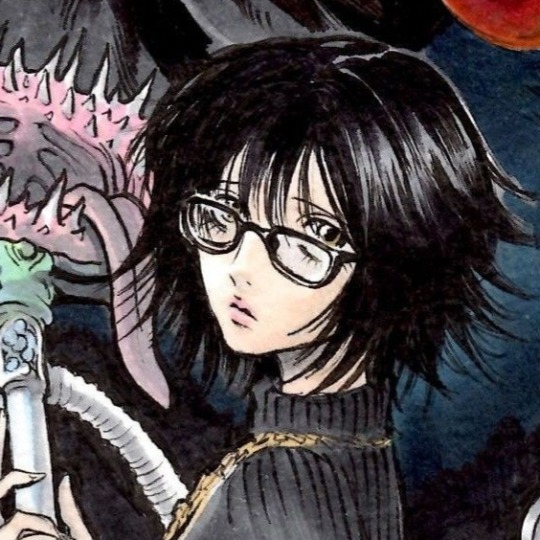



pakushizumachi matching layouts > __ ☆ ! fav/reblog r highly appreciated <3
#matching layouts#matching icons#trio layouts#pakunoda layouts#pakunoda packs#pakunoda#machi#shizuku#machi layouts#machi komachine layouts#machi packs#machi moodboard#machi icons#machi layout#shizuku murasaki packs#shizuku murasaki layouts#shizuku packs#shizuku layouts#hxh packs#hxh layouts#hxh moodboard#hunter x hunter layouts#hunter x hunter packs#anime layouts#messy layouts#anime packs#ulzzang layouts#anime moodboard#ulzzang lq icons#carrd help
1K notes
·
View notes
Text








🍥★˖ ࣪♟️ Black Pink 愛する. . . Girls !?
#hunter x hunter matching layouts#hunter x hunter layouts#hxh layouts#anime layouts#random layouts#carrd icons#twitter bios#twitter packs#anime messy layouts#anime packs#dividers#soft layouts#machi layouts#machi komacine#shizuku icons#shizuku murasaki#chrollo#killua#gon#hisoka#kurapika#anime icons#twitter layouts#gifs#twitter headers#manga layouts#moodboard#soft moodboard#carrd resources#carrd stuff
4K notes
·
View notes
Text
🌸 ##_ _ M3SSY L4Y0UTS ! <3

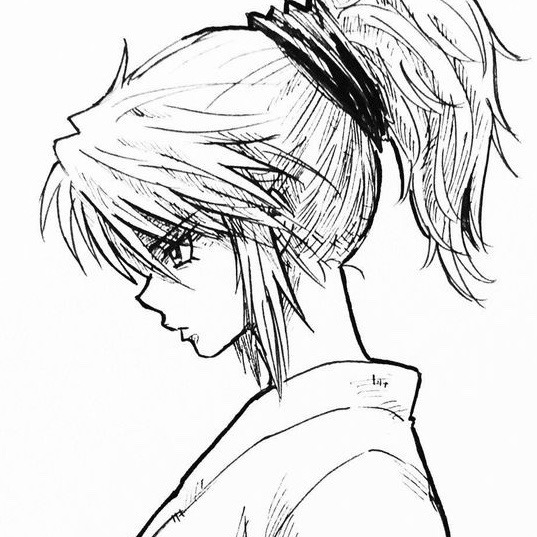

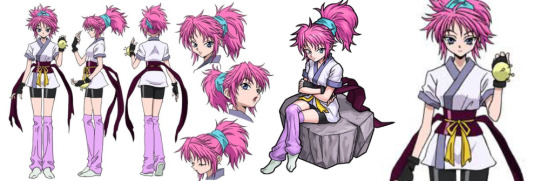
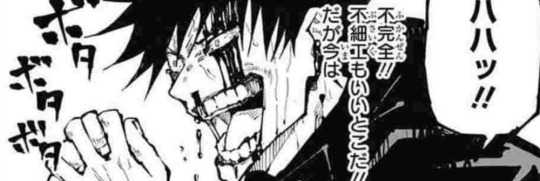

★ MACHI - pack. ♡̸ ⌗ (。>﹏<。 ): ❕
do not re-post! ᎔ を吸 ?! 𓈈 [REQ.]
#machi#マチ#phantom troupe#phantom troupe icons#phantom troupe layouts#phantom troupe header#machi icons#machi header#machi layouts#machi messy layouts#machi hxh#machi messy icons#hunter x hunter#hunter x hunter headers#hunter x hunter layouts#hunter x hunter icons#hunter x hunter moodboard#pink layouts#messy icons#anime icons#manga icons#lq icons#messy layouts#anime layouts#anime messy layouts#anime twitter packs#clean icons#jujutsu kaisen#jujutsu kaisen header#anime header
1K notes
·
View notes
Note
hii, do you have icons for this header?

hii here it is! hope you like <33





#asks#reqs#kenji icons#kenji layouts#machi icons#machi layouts#uraraka icons#rika icons#anime icons#anime layouts#packs anime#twitter packs#messy layouts#random icons#random layouts anime#anime messy icons#header anime#random headers
196 notes
·
View notes